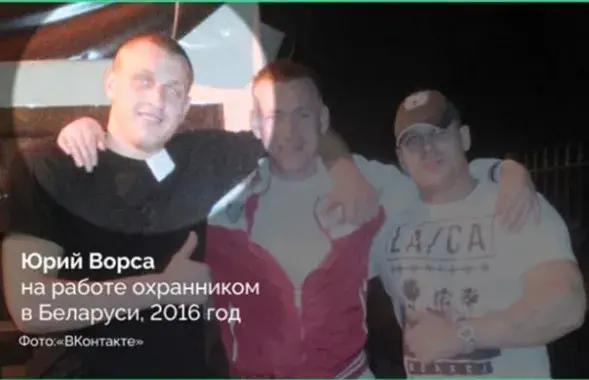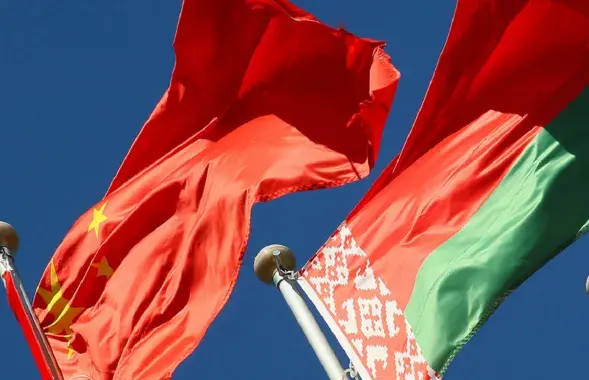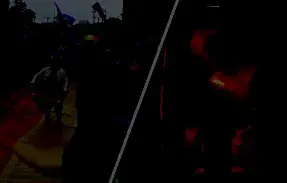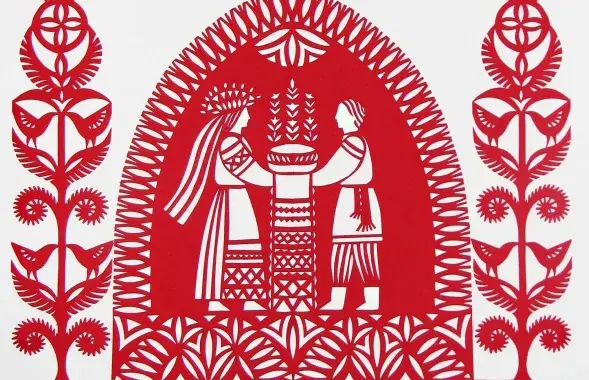Elegant victories: consistent history of referendums in Belarus
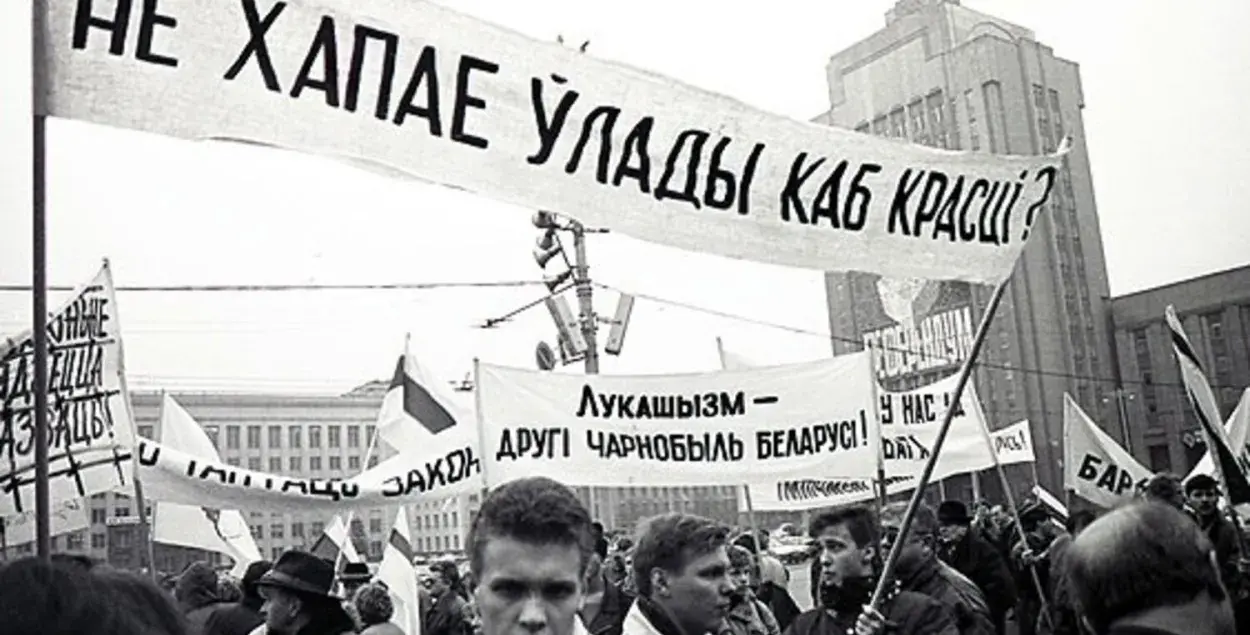
Rally against the referendum in 1996/ Archives of Belarus
Post-Soviet Belarus has already held three referendums followed by changes made to the Constitution. As a consequence, the power of Alyaksandr Lukashenka grew. The next plebiscite is scheduled for February 27. But do we remember how the previous ones took place? After all, the children who were born in 2004 - the year of the last constitutional referendum - are turning 18 in 2022.
Euroradio recalls the brief (and sad, but stable) history of the Belarusian referendums.
1995: language, symbols and integration
Lukashenka has been president for only half a year but still decided to initiate a referendum. At the beginning of 1995, he announced that he was going to amend the Constitution. It was planned to discuss the change of the state symbols, to make Russian the state language, to give the president the right to dissolve the Supreme Soviet, and to receive the approval of the people for the integration with Russia.
The referendum had to be approved by the Supreme Soviet deputies. It happened on May 14 of the same year. However, the deputies disagreed with three of the four questions proposed by Lukashenka. The wording contradicted the Declaration of Sovereignty, the Constitution and the laws. In response, the recently inaugurated head of state threatened to suspend the Supreme Soviet.
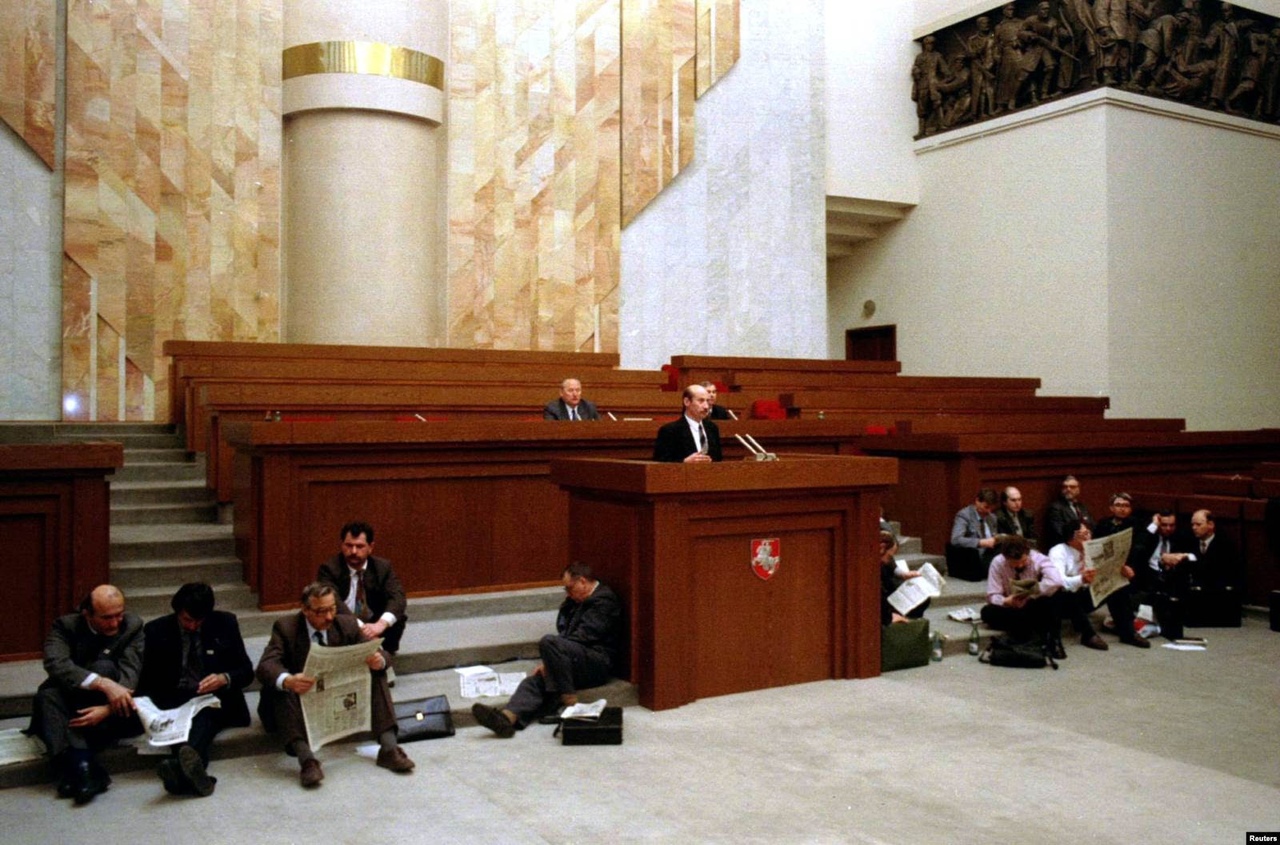
A group of deputies led by Zianon Pazniak and Aleg Trusau went on hunger strike on April 11 and refused to leave the Oval Room. The situation was resolved "elegantly" as security guards and unmarked men arrived at the parliament building at night. They were supposedly responding to a bomb threat (sounds familiar?). The deputies refused to leave. They were beaten and forcibly removed, allegedly to save their lives.
There was even a criminal case launched over the beating of the deputies but it ended in nothing. The prosecutors could not get the tapes of what was going on.
Already on April 13, after Lukashenka's comments on the incident and the inarticulate reaction of the Supreme Soviet's Myachyslau Hryb, the deputies repeatedly (in violation of the regulations) voted on the referendum. And approved it. At the plebiscite, all the changes proposed by Lukashenka were supported.
There was a paradox in the voting: the referendum was held simultaneously with the first round of the parliamentary election. However, in 141 constituencies out of 260, the parliamentary elections were not held due to a low turnout. At the same time, the referendum turnout was quite satisfactory.
1996: building the vertical
In 1996, Lukashenka wanted to hold one more referendum and to change the Constitution. The reason was the crisis between the president and the parliament which had intensified during the year.
The Supreme Soviet agreed to the referendum and put forward its own questions. Simply put, Lukashenka's questions were about turning Belarus from a parliamentary-presidential republic into an exclusively presidential one, while the Supreme Soviet asked questions about turning it into a parliamentary one. In addition, Lukashenka wanted to deal with issues of free sale of land. He was also busy moving Independence Day to July 3, dealing with the election of local authorities and the death penalty.
The Constitutional Court rejected most of the Lukashenka's questions as illegal. But this did not prevent the referendum from happening although with many violations.

Already during the preparation stage, Lukashenka fired the CEC head Viktar Hanchar, replacing him with Lidziya Yarmoshyna. A conflict with Hanchar preceded the whole thing. Contrary to the law, the ballots were printed not by the CEC, but by the Administrative Department (therefore their exact number is unknown), and during the early voting, the text of the amendments was not printed, and people "voted" without knowing what they voted for.
Moreover, only the Supreme Soviet could fire the CEC head. But this did not prevent Lukashenka's security service from occupying the premises of the CEC by force. They literally took Hanchar, Minister of the Parliament Syamion Sharetski and Prosecutor General Vasil Kapitan out of there.
On the main election day, there were even more irregularities. Observers found it hard to work and there were agitation campaign instances recorded right in the polling stations accompanied by "metamorphosis" with the turnout.
According to the official data, the draft constitution proposed by Lukashenka was approved, the death penalty was upheld, local government elections and permission to sell land were rejected. All the questions put forward by the Supreme Soviet were rejected.
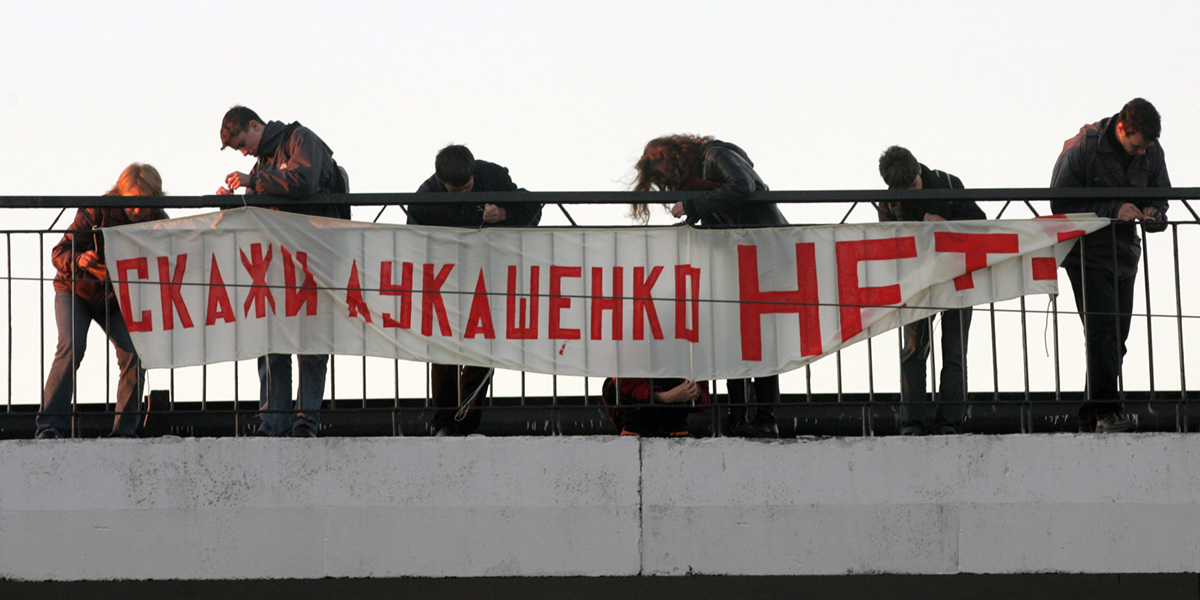
At that time, the human rights situation was the following: the authorities liquidated party branches and human rights organizations (e.g., the Belarusian Helsinki Committee), and fought against peaceful protests. The national mass media outlets were under full control.
A few weeks before the referendum, sociologists from The Gallup Organization/Baltic Surveys conducted a survey. They discovered that 39% were ready to support the change of the Constitution, 32.5% were against it, and the rest were undecided. The official CEC data, however, was quite different: 79.42% of voters supported the changes.
After this referendum, Lukashenka was able to go to the polls four more times: in 2006, 2010, 2015, and 2020.


